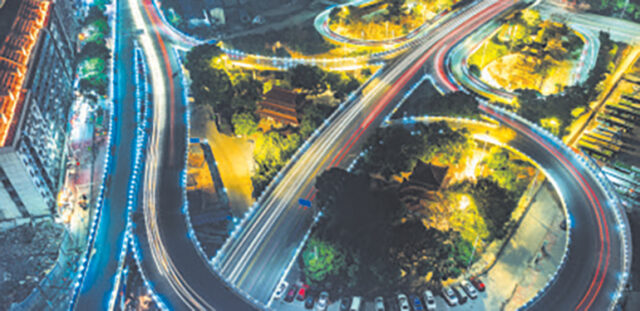Philippine electronic product exports may reach $110 billion in five years

By Justine Irish D. Tabile, Reporter
THE SEMICONDUCTOR and Electronics Industries in the Philippines Foundation, Inc. (SEIPI) said exports may possibly hit $110 billion in five years, but uncertainty clouds the outlook.
“It is possible… I will just leave it at that because there are a lot of external factors,” said SEIPI President Danilo C. Lachica at the pre-event conference for the 20th Philippine Semiconductor & Electronics Convention and Exhibition (PSECE) on Thursday.
He said the industry’s growth will be driven by new and emerging technologies.
“The drivers of growth for the electronics industry will be new devices and new technology in different sectors, whether they may be automobiles, devices, cellphones, computers, data centers, or renewable energy,” Mr. Lachica said.
Under the roadmap, the industry is targeting to make the Philippines a consistent and reliable global partner for packaging $70 billion of semiconductors, assembling $40 billion of electronics, and providing globally recognized integrated circuit (IC) design services by 2030.
Mr. Lachica said exports are rising but the industry still expects flat growth this year.
“This year, the (SEIPI) board projected a flat growth for 2025. However, we’ve seen some movements. In fact, if you look at the year-to-date numbers through August, we were seeing modest growth,” he said.
“Don’t get your hopes up too much (but) you may even go up by maybe 5% or something like that.”
The outlook is still uncertain because of the geopolitical factors, which include the US tariffs.
“But hopefully we’ve had enough momentum through August that we will sustain that modest growth for the year,” Mr. Lachica said.
Data from the Philippine Statistics Authority showed that exports of electronic products reached $29.48 billion in the first eight months, up 7.4% from a year ago.
“Almost everything has electronic components, and the Philippines does the assembly and packaging for those devices… so, the overall demand in the world is increasing notwithstanding the tariffs, so that causes optimism on our part,” the SEIPI official said.
US President Donald J. Trump previously announced plans to impose sectoral tariffs on chips as high as 300% in a bid to bring back manufacturing to the US.
“If we continue with our pattern that we are seeing [in the first eight months], we may even reach, if not exceed, the 2023 numbers this year,” Mr. Lachica said.
In 2023, exports of electronics reached $45.65 billion.
Meanwhile, Office of the Special Assistant to the President for Investment and Economic Affairs Undersecretary Ma. Angela E. Ignacio said that the government is targeting to move from traditional assembly, test, and packaging (ATP) to a more advanced ATP in the next five years.
“And of course, we want to move into the IC design industry as well, because we have realized that most of it is coming from Filipinos, so we want to promote it and let them come home and develop the industry here,” she said, adding they are also looking at wafer fabrication plants in the future.
To support this, the Semiconductor and Electronics Industry Advisory Council on Thursday unveiled its five-year workforce development plan.
“So, the target is 128,000 new jobs across the said industries, and we have three technical working groups working on this,” Ms. Ignacio said.
SEIPI has long been urging the government to build a $10-million lab-scale wafer fab, but Mr. Lachica said that the government has yet to find the funding for the project.
However, he warned that the country should not wait too long, as it may “miss the boat,” noting that the Philippines is already missing out on a significant amount of exports.
Aside from increasing exports, having its own wafer fab will allow the country to increase the localization of electronic exports, Mr. Lachica said.
He said that the industry has already made strides in localization, producing around P130 million worth of localized parts. However, this is still relatively small versus what the country is importing, he added.
“If we can localize 1% of the materials we import, that will be something like P15 billion, which means a lot of jobs and a lot of prevention of dollar leakage,” he added.
He warned, however, that the Philippines still does not have the capacity to produce most of these materials.
“So, there is a lot of work that needs to be done, but we are making progress slowly but surely,” he added.
SEIPI is set to hold PSECE 2025 from Oct. 28 to 30 at the SMX Convention Center Manila, Pasay City, which is expected to host 250 local and international companies from China, Germany, and Taiwan.














